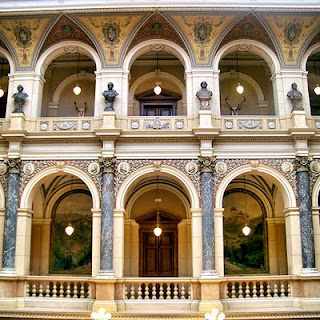[Click on an image to see a larger version of the photograph]
Yesterday we had a day to spend in the Chicago Loop, and we went to the Millennium Park. I was impressed by the Lurie Garden, which is a surprisingly tranquil place in the middle of the hustle and bustle of downtown Chicago. Even though Taste of Chicago was going on, we found red-winged blackbirds singing in the garden and saw lots of butterflies. The garden consists of five acres of greenery tucked among the skyscrapers (that's Sears Tower in the background):
Here's one of the many coneflowers that was blooming:
This view of the garden shows how colorful and prairie-like it is:
The other thing that really caught my eye in Millennium Park is the outdoor sculpture called the Cloud Gate. Reflections of the sky, the buildings and the people in the park are subtly bent and twisted by the sculpture's mirrored surface. The Cloud Gate was so photogenic I took lots of pictures. Here are just a few:
































